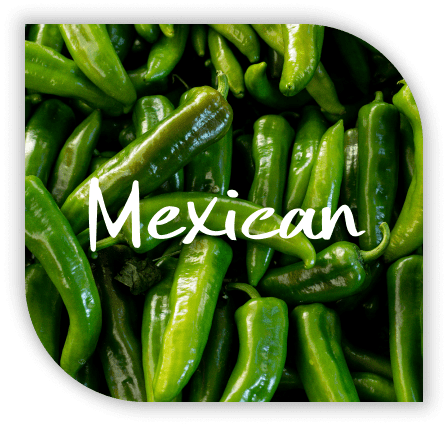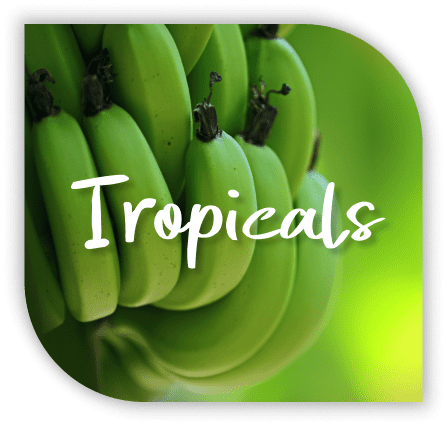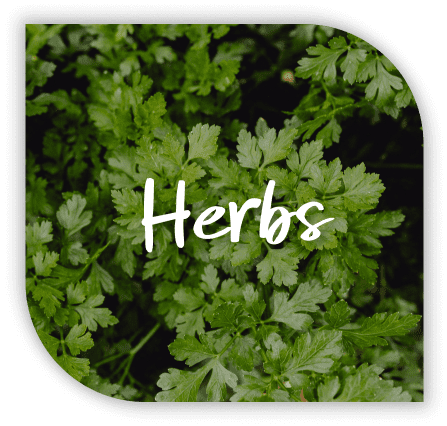
Our Products
Tropicals

Yucca
Yuca, also known as Cassava is a popular starchy root vegetable. It is the fourth most popular food in the World after rice, wheat and corn. There are many different preparations. Mostly they are peeled, cut into chunks and boiled. They can be eaten alone or added to soups and stews, such as “Sancocho” which is a popular stew all over Latin America.

Eddoes
Eddoes are the offspring of the mature version of them. They have a nutty flavor and are popular in Asia. They range in size from 5cm to 10cm. Just like most root vegetables they are meant to be eaten cooked. In Asia they are mashed and sweetened into sort of a marzipan paste and used in making pastries and cakes.

Yautia (Malanga) Blanca
Malanga blanca is a root/tuber that is popular in the Caribbean, the West Indies and parts of South America. Preparation is similar to other roots, however Cubans make fritters that are served both savory and sweet.

Yautia (Malanga) Lila
This type of taro root is characterized by its light purplish color. The flavor profile is similar to the white variety. Yautia Lila is popular in Jamaica and the West Indies. People like it in stews with other roots because the light purple color differentiates itself from the predominantly white ones.

Green Plantain
Green Plantains have not begun to ripen, they are picked at a younger and immature stage. Green plantains are a staple in most the Caribbean and many Latin American and African countries. The plantain can be boiled and mashed, fried or baked. Dominican baseball players joke that their power comes from eating plantains.

Malanga Coco
Malanga coco (large taro) is a root vegetable that resembles a yam and tastes similar to a potato with a sweet, nutty flavor. It can be prepared like a traditional potato, and it is usually added to curries and stews. Often fried to make chips. The Hawaiians use this to make poi.
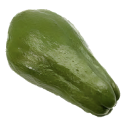
Black Chayote
Black Chayote squash is not really black. It is more of a dark green. Like all chayotes its crunchy and has a very mild, slightly sweet flavor with subtle notes of cucumber. Its nutritional value consist mainly of vitamin C, B6 and K. It is also good source of manganese, folate, niacin, zinc, copper, fiber and potassium. It is usually used for grilling, stir-fry or baking.

Green Chayote
Green chayote is by far the most popular of the chayotes. Preparation is the same as the others. In the Dominican Republic it is part of a refreshing salad with onions and lime juice. In Costa Rica it is diced finely and sauteed with onions, peppers, garlic and tomatoes and served over rice. In New Orleans it is called Mirliton and is a favorite in stuffings at Thanksgiving.
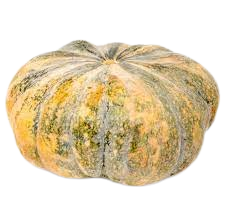
Calabaza Squash
Calabaza Squash is known by many different names. Whether it’s Muscat de Provence or Fairytale pumpkin, they all have a similar taste and appearance. They grow in different sizes and are normally colored green or orange. Their appearance can be solid, striped or speckled.
They’re flavor is nutty, sweet and are usually used for creams, soups and baked recipes.
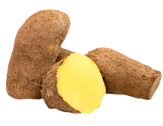
Yellow Yam
It has brown or black skin and is yellow in the inside. When cooked it has a firm texture and a nutty and slightly bitter flavor. It originated in Africa and was brought to the Caribbean. It is a staple in the Jamaican diet as well as many islands in the West Indies.


Ginger
Ginger is an underground stem that has been harvested and used in Asia for 2500 years. It has many medicinal qualities, mostly it’s been used to help with nausea and sea sickness. Ginger is a key ingredient in Asian and Indian foods.
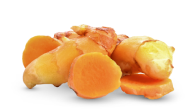
Turmeric
Known in Spanish as Curcuma, is a rhizome of orange color used most commonly as a spice. It is one of the main ingredients in curries and its flavor can be described as bittersweet with a hint of spice. It is commonly used as a seasoning. It can be pulverized or added in pieces to flavor soups or bisque.


Oriental (Murasaki) Yams
The Murasaki yam or sweet potato is similar to the “Batata” or “Camote” from Latin America. It’s a fundamental part of the diet of all Latinx and is a good substitute for potatoes and yucca. It can be cooked like a potato to be used in creams, soups or fried. Not as sweet as its cousin the American sweet potato, it has grown in popularity over the last 20 years.

